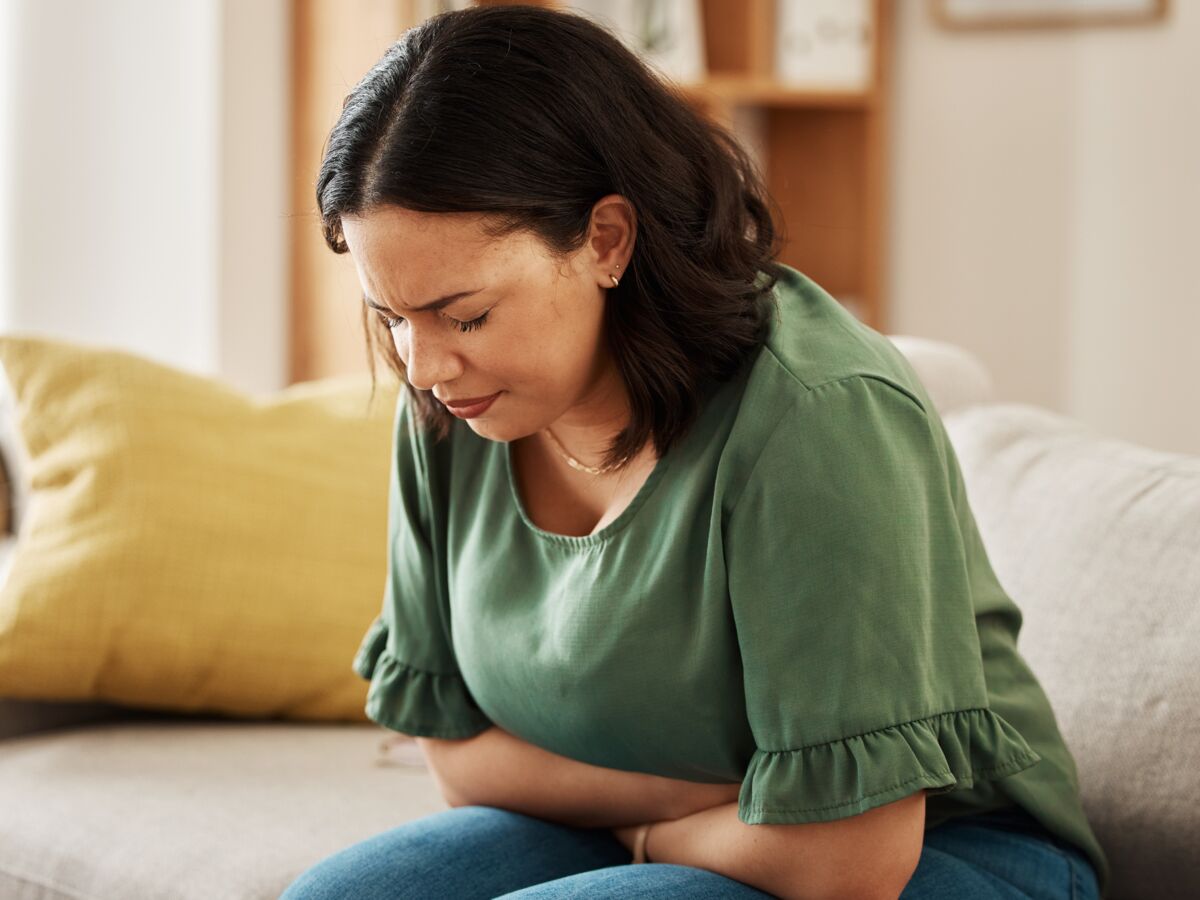Nearly 10% of women of childbearing age suffer from endometriosis in France. This chronic gynecological disease is caused by the development of a uterine lining (the endometrium) outside the uterus which can also affect other nearby organs. However, as indicated by the EndoFrance Association “We usually say that there is not one, but ‘endometriosis'”.
Among the different forms of endometriosis, we find rectosigmoid endometriosis. Also called digestive endometriosis, it mainly develops in the intestines, colon and rectum and would affect “6 to 30% of cases ofdeep endometriosis” and “50% of severe forms of endometriosis”, according to the French Association for Continuing Medical Training in Hepato-Gastro-Enterology.
What are the symptoms of digestive endometriosis?
In January 2020, 1,600 patients affected by endometriosis were interviewed by the EndoFrance Association as part of of an investigation in partnership with the Gedeon Richter laboratory and Ipsos. According to the results, women suffer on average from four to six symptoms that may be associated with the pathology. Among these events, we distinguish in particular:
- deep and posterior dyspareunia which is characterized by pain appearing during sexual intercourse with deep penetration;
- dysmenorrhea which results in intense pain during menstruation;
- dyschezia which is pelvic pain occurring before or after defecation;
- chronic pelvic pain that is not due to the menstrual cycle;
- infertility.
Irritable bowel syndrome, which includes all disorders of intestinal functioning, can also occur in women affected by rectosigmoid endometriosis. “It has been shown that irritable bowel syndrome is observed 2.5 to 3.5 times more frequently in women with endometriosis than in the general female population. Likewise, it has been shown that patients with minimal to mild, or moderate to severe endometriosis, report a high prevalence of symptoms belonging to irritable bowel syndrome in 65 and 50% of cases, respectively. explains the French Association for Continuing Medical Education in Hepato-Gastro-Enterology.
These digestive disorders can manifest themselves as diarrhea or constipation which are sometimes aggravated during menstruation. In rare cases, rectal bleeding, i.e. blood in the stools, may occur. The patient may also suffer from intestinal obstruction (abdominal bloating, cessation of stools, gas).
Digestive endometriosis: how is this gynecological pathology diagnosed?
The diagnosis of endometriosis often takes a long time because the symptoms can vary from one woman to another. “As the diagnosis often occurs late (estimated time of 7 years on average), patients with endometriosis suffer from diagnostic wandering leading to inadequate management of their symptoms or even a worsening of the disease”underlines the Ministry of Health. “These symptoms, despite their severity, are most often unrecognized for a long time in terms of pathological significance and are not taken into account specifically, so that the diagnostic time between the appearance of these symptoms and the diagnosis of endometriosis varies from 3 to 6 years. Given better knowledge of the disease and progress in pelvic imaging, this interval is decreasing quite quickly”completes the French Association for Continuing Medical Education in Hepato-Gastro-Enterology
If digestive endometriosis is suspected, a complete assessment is carried out to confirm the condition. Several examinations are carried out such as:
- pelvic magnetic resonance imaging (MRI) which allows you to observe the different organs in the pelvic area and identify potential anomalies;
- an endovaginal ultrasound, also called rectosonography, which allows images of the uterus, ovaries and tubes to be obtained;
- an echoendoscopy which consists of carrying out an exploration of the abdomen with an ultrasound and endoscopic approach;
- a diaphragmatic MRI which is an exploration of the posterior part of the diaphragm to identify possible lesions;
- an abdominal MRI which is a technique for detecting tumors, infection, hemorrhage or inflammation.
What are the treatments for rectosigmoid endometriosis?
Hormonal treatment is generally prescribed for digestive endometriosis. This treatment helps block periods and slow the progression of the pathology. But surgical intervention is sometimes necessary when the pain becomes too intense and is no longer alleviated by hormonal treatment. The decision to have a surgical operation is decided by a multidisciplinary team made up of a gastroenterologist, a digestive surgeon or even a gynecological surgeon who are often all experts in endometriosis.
Sources: the French Association for Continuing Medical Education in Hepato-Gastro-Enterology, the EndoFrance Association, the Ministry of Health
Read also :
⋙ Endometriosis: finally better care
⋙ Endometrium: definition, role and anomalies
⋙ Endometriosis: 2 women recount their fight against the disease
